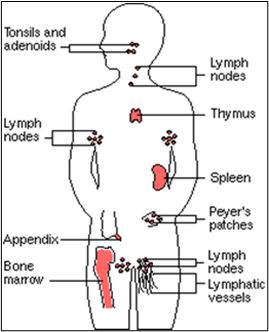Part 2 - Your Healing System
©Arlene R. Taylor, PhD www.ArleneTaylor.org

The immune system—nicknamed The Doctor Within—has been touted as the most effective healing system on the planet. Estimates are that 85 percent of all illnesses are within its reach for healing.
Unexplained healings do occur, but if you get sick and if you recover, the immune system plays a huge part.
As with everything else, the health of the body begins in the brain. It appears that the mammalian layer directs immune system function. That is fascinating, since emotional impulses appear to arise in this subconscious layer of the brain. This suggests that high levels of Emotional Intelligence—helping you manage emotions and feelings in a way that results in positive outcomes—may be critical to the health of the immune system.
Do you know the names of your healing system’s components. If offered $100 for naming each component, how much money would you collect?
The thymus gland. A rather small triangular organ composed of two lobes, the thymus is located between your lungs, just above your diaphragm and behind your breastbone or sternum. It oversees the maturing of T-lymphocytes, white blood cells that are critical for fighting infections. Avoid confusing it with the thyroid gland that is wrapped around your trachea at the front of your neck, just below the Adam’s apple.
- The tonsils. Technically, you have three pairs of tonsils guarding your lungs and digestive system. They serve as the first line of defense against respiratory and gastrointestinal infections. The three are, as follows:
- Lingual tonsils at the base of the tongue
- Pharyngeal tonsils or adenoids
- Palatine tonsils at the back of your throat, the ones most people know about.
- The spleen. This amazing organ is located to the left of your stomach in the far upper left of the abdomen, the spleen has several jobs. It filters the blood, recycles hemoglobin from old red blood cells so it can be reused, stores platelets and white blood cells, and helps fight some types of bacteria that cause pneumonia and meningitis. If the spleen is injured and ruptures, it can cause life-threatening bleeding and becomes a medical emergency.
- The appendix. A worm-like tube, the appendix is attached where the small and large intestines join. Its job is to review what is passing through the intestines and alert the immune system to harmful organisms. Appendicitis is an infection of the appendix itself. If the infection is serious enough or if the appendix ruptures, it must be removed surgically.
- Peyer’s Patches. Thirty or forty tiny clumps of cells cluster in the mucous lining near the end of the small intestine. Like the appendix, Peyer’s Patches are samplers. Upon detecting something suspicious, they alert the Immune system to send white-blood cell fighters.
- Bone marrow. Flexible tissue inside the more than 200 bones—including the skull—birth 500 billion cells every day. Immature T cells migrate from the bone marrow to the thymus gland. While growing to maturity, these cells receive combat training, much like individuals in branches of the military. When mature, they join the immune system’s elite combat forces.

So, how many of these components could you have named? One Thymus, three pairs of tonsils with different names, one spleen, and one appendix, 30-40 Payer’s patches, and potentially 200 bone marrow sites.
Do you still have all of these “components” or have you lost some along the way? Amazingly, they are only part of your healing system. There are several others, and a new one was discovered in 2015!
Meet these in Part 3.

